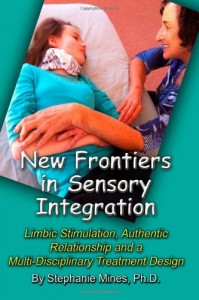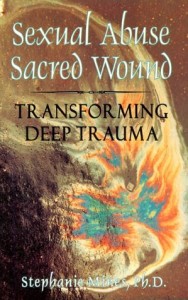Prematurity, Caesarean Delivery and Sensory Integration
Part Two in a Three Part Series
Read Part One, Advocating for Childhood, Neurodiversity and Limbic Stimulation Here

The dramatic rise in autism, sensory disturbances and learning disorders for children cannot be attributed to any single factor. However, in all my research and work with people who face significant, chronic health challenges of any kind, I always take a whole person perspective. This means that I look at the history of the individual from the time they were conceived. I consider all the forces, genetic and epigenetic, environmental, emotional, spiritual, socio-economic and cultural, that shaped them.
By being truly curious and collecting holistic information I am often able to postulate what the roots of the disturbance might be and thus explore options for the remedy. This is always a collaborative project that frequently leads us to look more closely at pre and perinatal events.
In the case of children diagnosed with common sensory disturbances this collaboration is with them through play and with their family members, especially their parents. I would like to explore correlations I have unearthed in regard to hyperactivity and eating disorders, with caesarean delivery and prematurity, respectively. Rather than discussing these correlations in an academic format, I would like to share case studies from my book, New Frontiers in Sensory Integration (New Forums Press, 2014).
These two case studies were selected because they reveal how the nervous and sensory systems can be shaped very early in life for the purpose of survival with either a sympathetic or a parasympathetic dominance. This dominance then shapes neuronal consolidation, or patterns of neuronal behavior that are habitually replicated long after the original threats are over. The neurological axiom, “what fires together wires together,” is thus clearly demonstrated. The firing and wiring can even begin in utero.

Robbie: Sympathetic Dominance
Robbie was diagnosed with Obsessive Compulsive Disorder, Hyperactivity and Asperger’s Syndrome. This seven-year-old could spend days without sufficient sleep, perseverating on fears of having infected someone with something, and unable to focus. Robbie could turn his household, at the drop of a hat, into a madhouse supervised by groggy, sleep deprived parents, unsure of whom their son had become.
At the onset of his panic Robbie’s face would turn beet red. This was the signal that his sympathetic nervous system was calling the shots. He was in a permanent state of alert. His eyes darted and blinked rapidly. His hands were aflutter. He was in constant motion, and it seemed to come out of nowhere. This is what sympathetic nervous system dominance looks like when it is running amok.
What was behind this? His parents were mystified. After sleep studies, allergy, psychological and behavioral testing, medications and counseling, they were at the end of their wits. They came to a Family Clinic I was conducting with a colleague and in preparation completed a questionnaire about Robbie’s prenatal life and birth.
Robbie’s mother described her son’s emergency caesarean delivery as a horrific shock from which she was still recovering. She could not talk about it without crying. The situation had been life threatening; she had been medicated and did not see her son until the next day. Even after that she did not feel capable of engaging with him for quite a while. Both parents had wanted something very different for their first born who they planned to deliver at home.
I spent many hours with Robbie’s parents sorting through the emotions of that time, going back over the events in detail, differentiating the past from the present. Eventually they forgave themselves. They saw and felt that they had not failed each other or their son. They understood what happened because in the present they had the resources to do that. When they were rushed to the hospital because mother and son were at risk from a previously undetected infection, they could not analyze the sequence that led to the caesarean delivery, the pain medication, the anesthesia, and the separation of mother and child.
You could say that in order to help their son resolve the sensory overload of his birth experience, his parents had to sort out their own. Once this was complete and Robbie’s parents were fully in the present we did some fun filled play therapy with Robbie that allowed him to resolve the unsequenced panic, loneliness, and sensory disorganization of his early experiences. Because Robbie’s parents had calmed their own nervous systems prior to addressing their son’s needs, their brains were able to anchor him in the safety of his present life. Robbie sensed this immediately.
In multiple sessions that promoted bonding through child directed play activities combined with the subtle applied touch protocols that I have tested clinically for unwinding the nervous system, Robbie was able to have sustained stable sleep. Good sleep is a simple, amazing remedy! Our play unraveled Robbie’s fear of contagion, an implicit carry-over from his pre and perinatal experience, and allowed him to experientially acknowledge his healthy immune responses. I continued to support his evolving social engagement and it soon became clear that this spirited young man had found his center and joy in being a child.

Ellie: Parasympathetic Dominance
Ellie’s story illustrates the process of using creativity to address the sensory struggles surrounding ritualized eating. We are living in an unusual time in regards to children and eating. There are sharp increases in the number of children with eating disorders and the greatest increase is for children under the age of seven (American Academy of Pediatrics). Difficulties with eating are often partnered with other sensory disorders and lead to structural, physiological and learning challenges.
Asking a child why they don’t eat or why they eat only certain things or under certain conditions is a waste of time. They don’t know the answer. But often their parents do, except they have not had the guidance to bring that answer into awareness.
Ellie was born prematurely with a frighteningly low birth weight and poor APGAR scores. She had been isolated, fed intravenously, and remained in a vulnerable state for weeks. Now her learning was delayed and she struggled with comprehension and focus. She avoided certain foods and insisted on eating alone in her room. She ate very small amounts. The physical vulnerability she experienced coupled with the isolation was reminiscent of her immediate post-natal environment. It was almost as if she was unconsciously replicating her early fragility. Her pallid complexion now was reminiscent of her earlier weakness and a sign of parasympathetic dominance.
When a child is not thriving parents tend to panic and over-focus on what appears to be the main culprit: not eating enough. This was not working. It may even have strengthened Ellie’s withdrawal (another parasympathetic indicator), but her parents did not know what else to do. Ellie’s physical therapist had studied with me and suggested a consultation. My recommendation was to engage Ellie in story-making and storytelling about her birth.
What we did later became known as the story of when Ellie came to dinner. Ellie was six years old when we developed this story but her language processing was that of a somewhat younger child. It took several tries, but it awakened Ellie’s spontaneous impulse to join her family at the dinner table. The story is completely true but it had never been told to Ellie or to anyone.
The story defines Ellie’s innate strength. It depicts how hard she fought to be here and to stay here. It portrays her joy at being welcomed into her family. Through this simple tale Ellie could claim the victory she had won and celebrate the life she had chosen.
Once upon a time there was a newborn baby girl named Ellie. Ellie was so little that she had to live in a special place before her Mommy could hold her. Her Mommy and Daddy named her Eleanor because that means little shining light. That was just what Ellie was to them ~ their little shining light.
Every day Ellie’s Mommy and Daddy sat by her side. Even though Ellie’s eyes were closed and she did not move very much, her Mother and her Father never stopped loving her or believing in her.
One day Ellie opened her eyes and looked right at her Mother.
Her Mom smiled and said, “You made it! I am so proud of you. Welcome little light. I can’t wait to take you home!”
Every day after that Ellie would open her eyes. Her Mother and Father kept saying that she had made it. She had fought hard and they were proud of her. She was their shining light.
After a few days Ellie could leave her special place in the hospital and go to her home with her Mother and Father and they could hold her and hug her and Mommy could feed her from her body. They were so happy to be together.
Ellie’s brother and sister were happy to have her with them too, and to see her eating with them at the table when they all come together for meals. Ellie got bigger and bigger but her Mommy and Daddy still called her their little shining light.
These case studies were excerpted, adapted and reframed from New Frontiers in Sensory Integration (New Forums Press, 2014).


Thank you for the wonderful work that you are doing. Blessings.